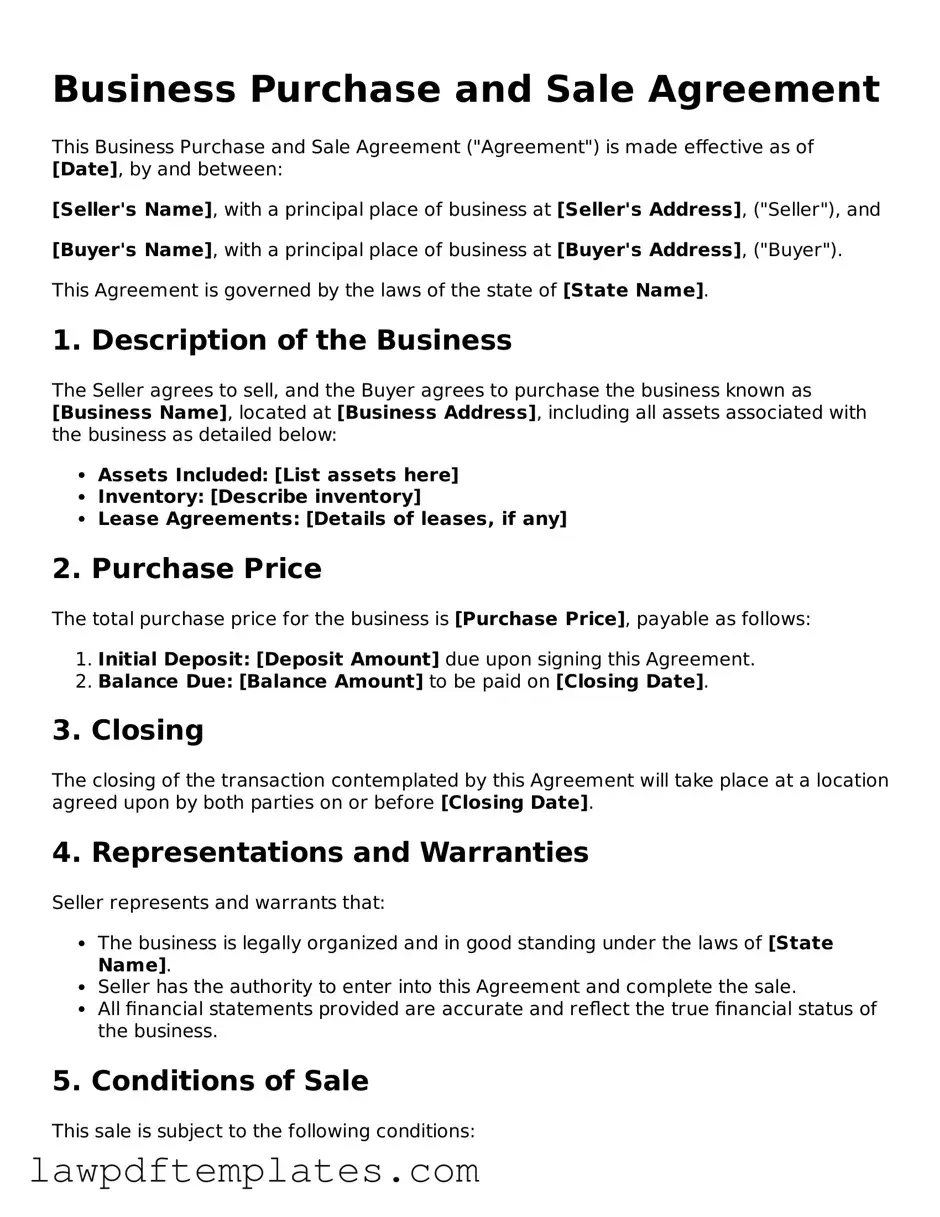Business Purchase and Sale Agreement
This Business Purchase and Sale Agreement ("Agreement") is made effective as of [Date], by and between:
[Seller's Name], with a principal place of business at [Seller's Address], ("Seller"), and
[Buyer's Name], with a principal place of business at [Buyer's Address], ("Buyer").
This Agreement is governed by the laws of the state of [State Name].
1. Description of the Business
The Seller agrees to sell, and the Buyer agrees to purchase the business known as [Business Name], located at [Business Address], including all assets associated with the business as detailed below:
- Assets Included: [List assets here]
- Inventory: [Describe inventory]
- Lease Agreements: [Details of leases, if any]
2. Purchase Price
The total purchase price for the business is [Purchase Price], payable as follows:
- Initial Deposit: [Deposit Amount] due upon signing this Agreement.
- Balance Due: [Balance Amount] to be paid on [Closing Date].
3. Closing
The closing of the transaction contemplated by this Agreement will take place at a location agreed upon by both parties on or before [Closing Date].
4. Representations and Warranties
Seller represents and warrants that:
- The business is legally organized and in good standing under the laws of [State Name].
- Seller has the authority to enter into this Agreement and complete the sale.
- All financial statements provided are accurate and reflect the true financial status of the business.
5. Conditions of Sale
This sale is subject to the following conditions:
- Buyer’s satisfactory review of the business financials.
- Buyer obtaining necessary financing.
- Completion of any required inspections.
6. Miscellaneous
This Agreement constitutes the entire understanding between the parties and supersedes any prior agreements regarding the subject matter.
Any amendments to this Agreement must be in writing and signed by both parties.
7. Signatures
IN WITNESS WHEREOF, the parties have executed this Business Purchase and Sale Agreement as of the date first above written.
_____________________________
[Seller's Name]
Seller
_____________________________
[Buyer's Name]
Buyer
